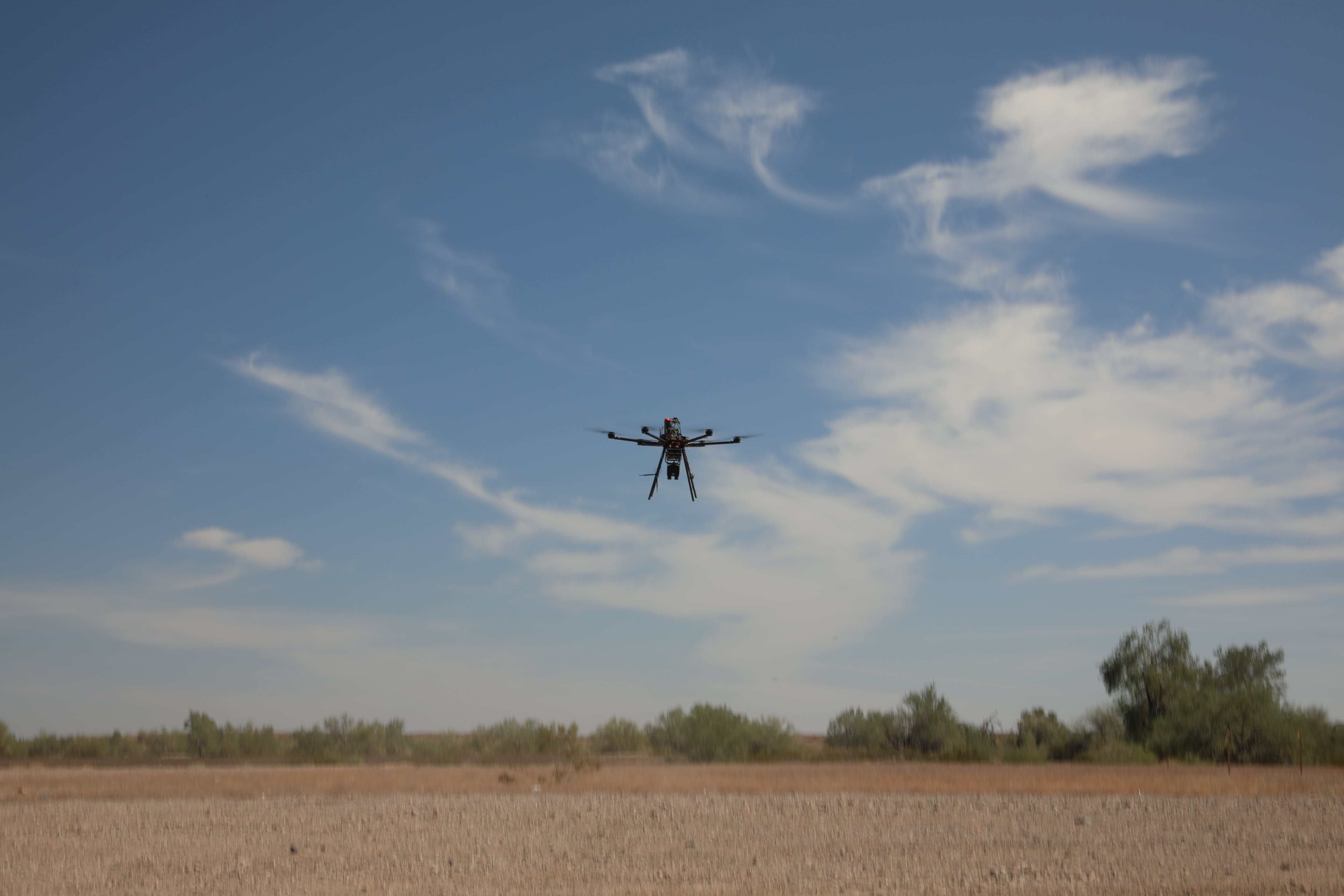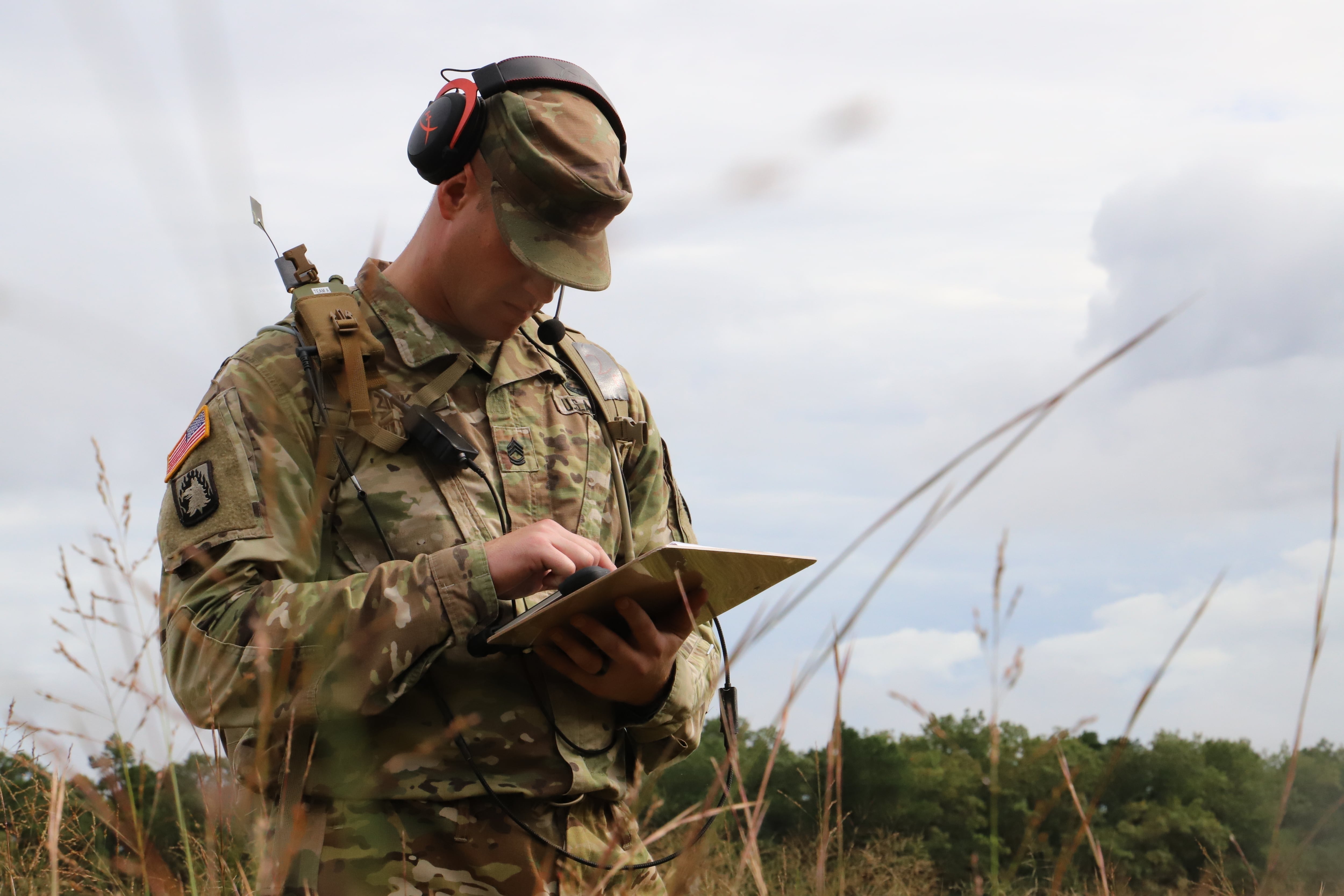WASHINGTON — The Jersey Devil, a legendary creature believed by some to inhabit the remote Pine Barrens in southern New Jersey, is said to communicate using a high-pitched, blood-curdling scream.
This summer, scientists and engineers descended on the area, not to hunt for the mythical beast, but to experiment with communication technologies meant to reinforce U.S. Army capabilities in difficult terrain.
Officials said weeks of testing at the fourth annual Network Modernization Experiment, or NetModX, at Joint Base McGuire-Dix-Lakehurst brought the service’s aerial tier network one step closer to reality, where it could be used to bounce battlefield information across valleys, neighborhoods and other isolated areas.
“We really saw how the aerial tier could extend our network, but we wanted to do some further evaluations,” Army Brig. Gen. Jeth Rey, director of the Network Cross-Functional Team, told reporters July 21. “NetModX and EDGE were really able to help us in that, and now we’re going to introduce it back into Project Convergence 22, which will allow us to potentially take it further and get it into the hands of our soldiers.”
Aerial tier networking — one of dozens of focuses at the experiment — ensures connectivity by using airborne assets such as drones to overcome large, signal-impeding obstacles including mountains and buildings. Unlike satellites, which take time to arrange and can be jammed or destroyed, aerial tier gear can be deployed quickly overhead when and where soldiers need it, providing a critical link to friendly forces.
The Army is investing in the aerial tier network as the U.S. postures itself for larger-scale fights with world powers, the sort of conflicts that spread troops out and demand rapid information sharing. To that end, the Army has identified network modernization as one of six pressing priorities; others include long-range precision fires, air-and-missile defense and next-generation combat vehicles.
The location of NetModX, amid countless trees and other challenging landscapes, provided real-world conditions that the research community and industry leveraged. Realistic data and insights, officials said, are paramount to developing technologies best suited for a future fight.
RELATED

“I’ve told my team that we don’t need to test where everything’s wide open and flat because we need to test operationally, where we think we might be,” said James Tucker Swindell, chief of the radio frequency communications division at the C5ISR Center. “If you pull up your Google Maps and you look around the world, there are a lot of trees, a lot of foliage, and that can be very temperamental when it comes to specific frequencies in the RF spectrum.”
Among the C5ISR Center’s interests at NetModX was the Relay for Aerial to Non-line-of-sight Ground Environment, or RANGE, a science-and-technology program aimed at creating a “transformative tactical radio relay capability,” according to Swindell.
“We’re pushing for high throughput non-line-of-sight tactical comms, providing resilient options for communications-denied environments, all while incorporating the modular form factor for” unmanned aircraft systems, he said. “The reason why we’re doing that is if we build it for a UAS, when you need to scale it up for manned aircraft, it’s a lot easier to go that direction than the reverse.”
The RANGE team is working intimately with the Future Vertical Lift Cross-Functional Team to study and connect unmanned and other aerial systems to boots on ground.
At last year’s Project Convergence, a comprehensive exercise that contributes to Joint All-Domain Command and Control, a small drone was used to pass on communications and maintain contact. The Army hailed it as a success.
“That aerial tier will thicken and extend our network, our communications,” Rey said, “and improve the range and resilience of our network across the board.”
Colin Demarest was a reporter at C4ISRNET, where he covered military networks, cyber and IT. Colin had previously covered the Department of Energy and its National Nuclear Security Administration — namely Cold War cleanup and nuclear weapons development — for a daily newspaper in South Carolina. Colin is also an award-winning photographer.








